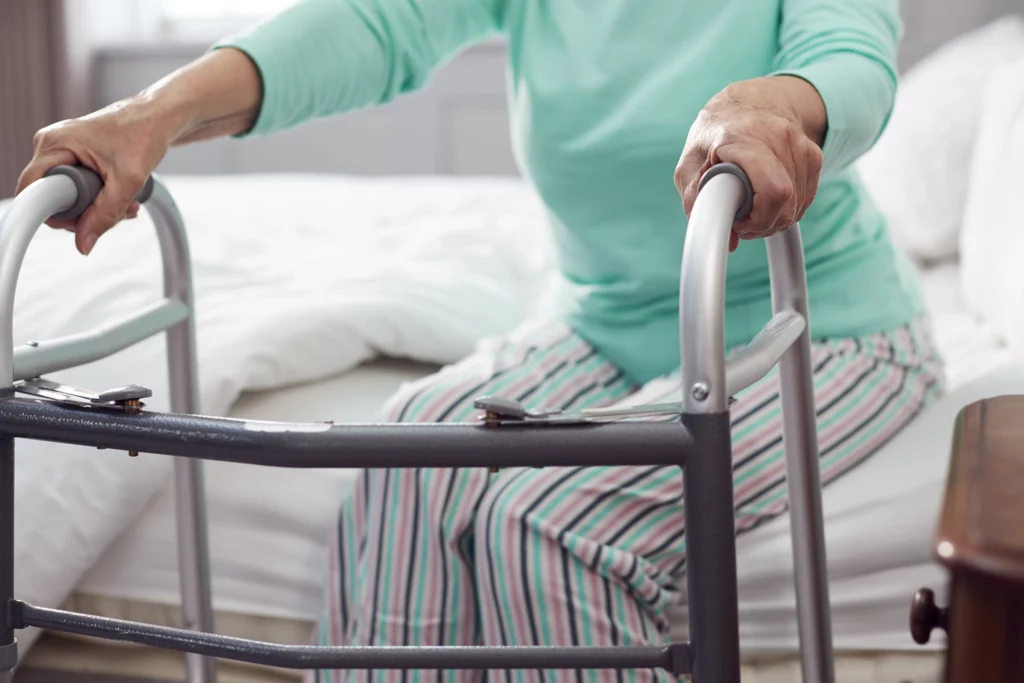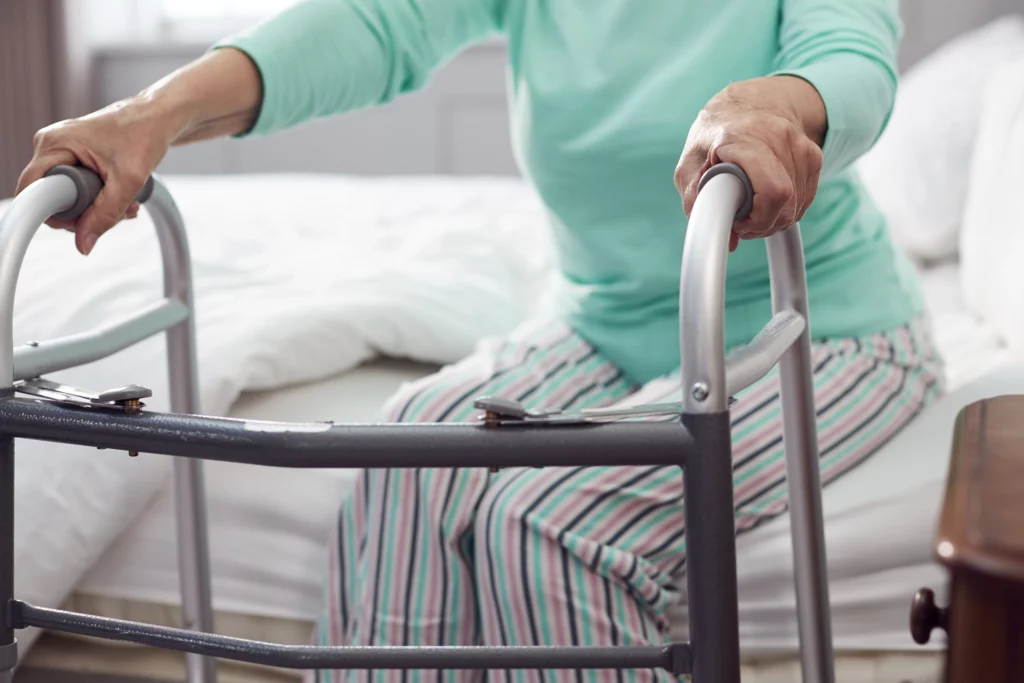
Occupational Therapy for Lewy Body Dementia: Strategies, Supports, and Resources
This post may contain affiliate links or Google Ads and we may earn a small commission when you click on the links at no additional cost to you. As an Amazon Affiliate, we earn from qualifying purchases. This is at no additional cost to you and helps with our website expenses.
Occupational therapy for Lewy Body Dementia (LBD) is a crucial aspect of treatment for individuals with living with this form of dementia. It is characterized by a decline in cognitive and motor abilities, which can greatly impact a person’s ability to perform daily activities.
Occupational therapists work with individuals with LBD to help them maintain or regain their independence and improve their quality of life.
Occupational therapy for LBD is needed because the symptoms of this condition can greatly affect a person’s ability to perform daily activities. Individuals with LBD may experience problems with memory, attention, and problem-solving, as well as motor symptoms such as tremors, stiffness, and difficulty with coordination.
These symptoms can make it difficult for individuals to perform activities of daily living (ADLs) such as bathing, dressing, and eating, as well as instrumental activities of daily living (IADLs) such as managing finances and taking medications.
Occupational therapists use a variety of therapies to help individuals with LBD maintain or regain their independence. These therapies may include the following.
Cognitive Retraining for Occupational Therapy for Lewy Body Dementia
Cognitive retraining is an important component of occupational therapy for Lewy Body Dementia (LBD) and can help improve the patient’s functioning and quality of life. Cognitive retraining encompasses a variety of interventions that are tailored to individual needs and helps patients identify, understand, and modify their behavior to better cope with dementia-related deficits in memory, problem-solving, language, or executive functions.
Therapists typically use cognitive retraining to target specific deficits related to LBD. This could involve teaching strategies to compensate for cognitive decline, enhance verbal communication skills, or improve reasoning ability. Additionally, therapists may utilize role-playing activities to increase task mastery and promote successful daily living skills.
Cognitive retraining also involves working with caregivers to develop strategies that enable them to empathize with the person’s experience of dementia while minimizing its impact on their own lives. Caregivers learn about the effects of the illness on their loved one’s behavior and interactions with family members and others, as well as effective techniques for managing difficult behaviors in a positive way.
The goal of cognitive retraining is ultimately to maximize the patient’s potential so they can live as independently as possible for as long as possible with LBD. Through this process individuals can become more self-reliant, adaptive communicators which improve the overall quality of life for both them and their families.
Sensory Integration for Occupational Therapy for Lewy Body Dementia
Sensory integration is a therapy approach to help individuals with Lewy Body Dementia (LBD) better interpret and respond to sensory input. It involves engaging in activities designed to adaptively process and respond to a variety of sensory stimuli such as tactile, auditory, visual, vestibular, and proprioceptive inputs.
Occupational therapists typically use sensory integration activities within the context of a comprehensive treatment plan for individuals with LBD. These activities are carefully selected and tailored to meet the individual’s needs based on their current level of functioning.
The goal is to help them build basic skills such as balance, coordination, motor planning, and body awareness that are fundamental for daily living tasks.
Some examples of sensory integration activities include brushing for tactile input, listening games for auditory processing skills, eye tracking exercises for visual spatial orientation, swinging or spinning for vestibular input, or movement therapy involving weight shifting or body patterns for improved posture control and gross motor coordination.
Additionally, Occupational Therapists may also incorporate cognitive retraining strategies into their treatment plans that involve learning strategies to compensate for dementia-related deficits in memory or problem-solving.
The ultimate objective of sensory stimulation or integration is to improve function by reducing confusion caused by stimuli overload while encouraging adaptive responses and increased levels of engagement in meaningful occupations. This can ultimately lead to improved social interaction and overall quality of life!
Adaptive Equipment Occupational Therapist Recommend
Occupational therapists may recommend a variety of equipment to help individuals with Lewy Body Dementia (LBD) manage their daily activities. This could include:
- Utensils and clothing specifically designed for those living with dementia
- Assistive devices such as wheelchairs, walkers, bed canes and chair alarms
- Safety equipment for the shower such as grab bars, handrails and bath mats
- Adaptive seating that provides support and stability
- Devices to improve accessibility such as ramps, stair lifts, door handles etc.
- Other specialized tools such as tactile puzzles and communication boards.
The aim is to provide safe and supportive environments that enable individuals with LBD to continue carrying out daily activities in the best way possible.
Modifying the Environment – What OT May Suggest
Modifying the environment is a key part of occupational therapy for Lewy Body Dementia (LBD). Occupational therapists may recommend changes to lighting, furniture arrangements, and other environmental aspects to improve safety and accessibility for the individual.
For example, a therapist may suggest installing grab bars or handrails in areas with high risk of falls such as the bathroom. Additionally, they may also recommend removing trip hazards such as rugs or clutter from pathways. Other modifications may include keeping items in easy-to-reach locations and providing support surfaces such as armchairs or cushions.
Finally, occupational therapists may also recommend tools like telephones with large buttons, adapted utensils or kitchen tools that are easier to handle, and specialized appliances such as voice-activated devices and picture prompts. All these changes can allow individuals living with LBD to live safely and comfortably at home.
Home Safety Inspections for Occupational Therapy for Lewy Body Dementia
Occupational therapists may also carry out home safety inspections to identify potential hazards and make recommendations that can prevent falls or other injuries. Some of the common recommendations are:
- Removing throw rugs or other objects that can cause tripping
- Avoiding clutter in pathways, particularly in high-traffic areas such as hallways and stairs
- Ensuring that there is sufficient lighting and adequate visibility of pathways
- Installing ramps or lifts to provide access to different levels of a house
- Incorporating furniture with arms or grab bars where necessary.
Working with Families and Caregivers
Occupational therapists also provide education and support to families and caregivers of individuals living with Lewy Body Dementia (LBD). This can include providing information on the effects of the condition and advice on how to manage it.

Therapists may suggest strategies to help the person in daily activities such as reminder systems, tools for problem-solving, and using visuals for instruction if necessary. They may also suggest lifestyle changes or discuss emotional issues or behavioral challenges that are impacting both the individual and their family or caregiver.
In addition, occupational therapists can offer support in decision-making by helping evaluate options and identify potential solutions. They can also help families develop a plan of action that is tailored to their needs so they are feeling informed and supported in managing their loved one’s condition.
Final Thoughts about Occupational Therapy for Lewy Body Dementia
In summary, occupational therapy is an essential part of treatment for individuals with Lewy Body Dementia. Occupational therapists use a variety of therapies to help individuals maintain or regain their independence and improve their quality of life, and they also provide education and support to families and caregivers. Home safety inspections by occupational therapists can help identify potential hazards and make recommendations for modifications to the living environment.
